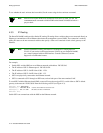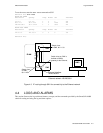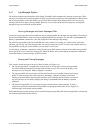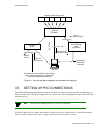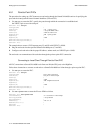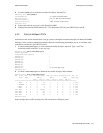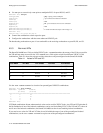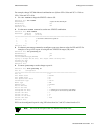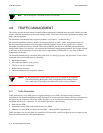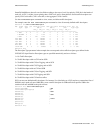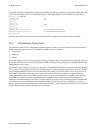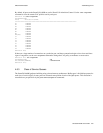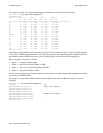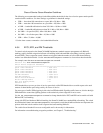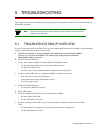
4-18 SmartCell 6A000 User Guide
Traffic Mana
g
ement Switch Administration
Note Do not change the VCC Mask for the CPU port (B4).
4.6 TRAFFIC MANAGEMENT
This section describes how the SmartCell 6A000 ATM switch manages bandwidth and congestion. It briefly describes
console commands that affect how the switch manages traffic. This section also provides guidelines for setting some
traffic control parameters.
For information on troubleshooting congestion problems, see Chapter 5, "Troubleshooting."
The SmartCell 6A000 has extensive abilities for managing the flow of traffic. Traffic management includes all
operations that insure optimum switch throughput, where throughput is based on rate of packet loss, available
bandwidth, and traffic processing overhead. Under most conditions, the switch can efficiently and automatically
manage traffic. However, if necessary, you can adjust the switch traffic management parameters. For example, it might
be necessary to adjust parameters for a port that carries a large amount of CBR traffic or a very large number of
simultaneous connections.
The SmartCell 6A000 console commands affect traffic flow on a per-QoS, per-port, and global basis. These console
commands affect switch traffic flow by controlling
• Bandwidth allocation
• Call Admission Control (CAC) policies
• Class of service for a connection
• Buffer memory allocation
• Threshold settings for anti-congestion routines
Caution Do not change traffic control settings unless you have expert-level experience
with ATM switching. Back up the switch configuration before making changes.
Also, make notes of the changes you make to the traffic control parameters.
4.6.1 Traffic Descriptors
Traffic characteristics of an ATM source are signaled through a set of traffic descriptors during connection
establishment. The SmartCell 6A000 uses traffic descriptors for resource allocation during call set up, and guarantees
the QoS across the connection. The source traffic descriptor is a set of parameters that describes the expected
bandwidth utilization of a connection. You can set these parameters, which include
• Peak cell rate (PCR)
• Sustainable cell rate (SCR) and maximum burst size (MBS)
• Minimum cell rate (MCR) and initial cell rate (ICR) — through UNI4.0 signaling only
Traffic descriptors vary for each QoS. If a connection is bi-directional, a traffic descriptor has to be assigned to each
direction and need not be the same in both directions.



